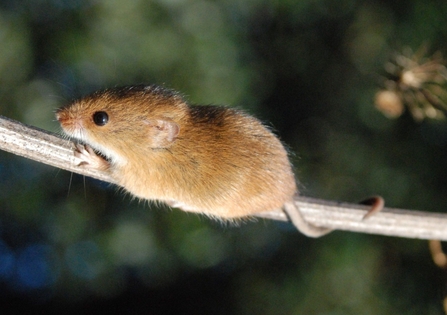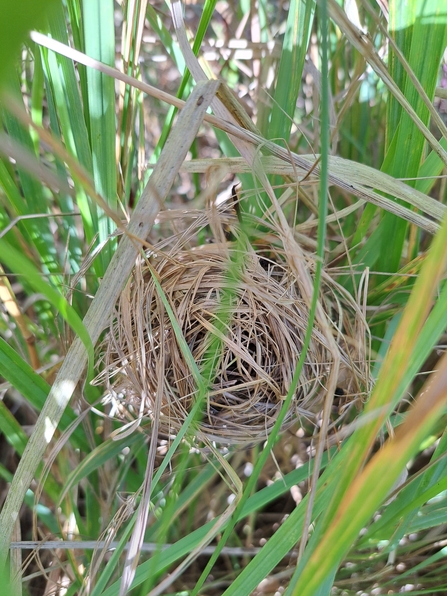Perhaps it is the ‘Harvest’ in Harvest Mouse that provides an instant association with summer – think ripe, swaying cereal fields and the picture starts to build but please allow me to expand the view.
Meet the Harvest Mouse
Weighing just 6g when fully grown (about the same as a 2 pence piece!), the Harvest Mouse is the smallest rodent in Britain. Well adapted to life in the “stalk-zone”, they are our only mammal species with a prehensile (capable of grasping) tail, which they use as an extra limb to grip hold of stems when climbing amongst tall vegetation such as grasses and sedges. They are russet-brown in colour with a fully white underside, and, unlike our other mouse species, they have short muzzles and small hairy ears. They are particularly elusive though, so you would have to be very lucky to spot one!



